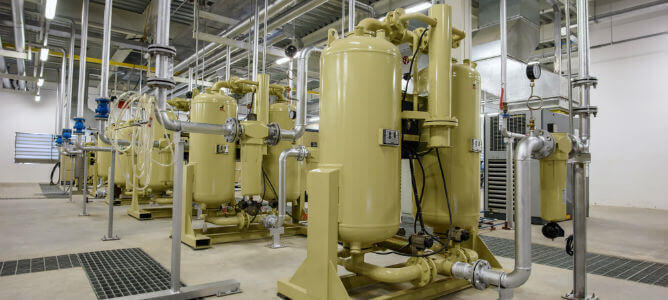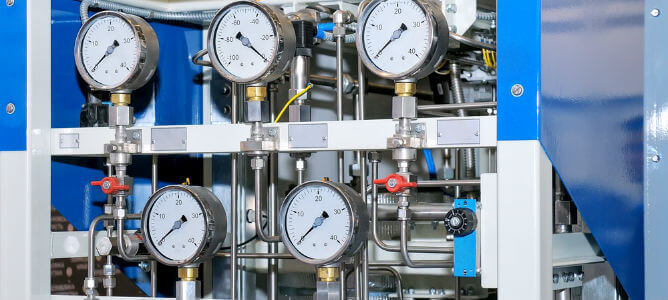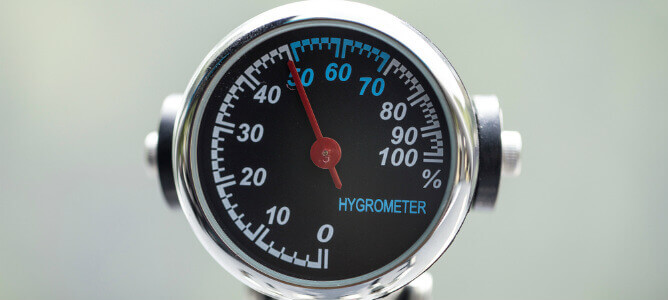
Compressed Air Testing – How to Test and Why It Matters
Compressed air has become indispensable in several domestic, commercial and industrial processes including beverage and food production. The operation of air hammers and wenches, paint atomization and brake systems for large vehicles wouldn’t be possible without the use of compressed air.
As with all industrial mixtures, there is the likelihood of unwanted impurities being found in the compressed air which might reduce its effectiveness. Learning how to test compressed air quality before issues occur could end up saving you time and money.
What Is Compressed Air Testing?
Compressed air testing is a standardized process of determining that the air being used in an industrial process is free of impurities. Typically, compressed air testing procedures involve three components:
- Water
- Solid Particles
- Oil
ISO 8573 Compressed Air Quality Standard
The ISO 8573 compressed air quality standard which can be used to analyze compressed air samples, is targeted to screen for three major contaminants (water, solid particles, and oil). These ISO guidelines for compressed air are recognized in several countries globally, including the United States, Germany, India, and the United Kingdom. This industrial air testing system is popular because it is both efficient and cost-effective to determine compressed air quality.
Why is Compressed Air Quality Important to Your Industrial Processes?

Compressed air is utilized in several processes where the presence of impurities cannot be tolerated. For example, food manufacturing processes using compressed air will fail health and safety inspection tests if impurities are found tainting the finished products.
To ensure that industrial-scale food production poses no health risk to end consumers, regulatory authorities require manufacturers to comply with strict compressed air quality standards.
6 Compressed Air Testing Procedures and Methods
Compressed air purity testing can be achieved by carrying out several procedures which will detect different impurities in air mixtures.
1. Filter Collection Using Microscopy
This technique utilizes an optical microscope to analyze particles within a compressed air sample. The setup has a grid membrane which can be used to capture small particles. However, this method cannot ascertain the presence of minute particles (0.1 – 0.5 microns).
Although this compressed air quality testing method will provide a standard result when done by an accredited laboratory, it is time and manpower intensive with higher costs for testing.
2. Laser Particle Counter
A laser particle counter, a highly specialized electronic device can be used to sample according to ISO 8573 compressed air quality standards. This method can effectively analyze air samples for particles of all size ranges.
The use of a laser particle counter is advantageous as it provides rapid analysis of particle concentrations of air samples (typical running time is about 10 minutes) and provides information on air quality via printable readouts. As a result, laser particle counters are particularly useful when multiple samples are to be checked for quality within a short timeframe.
3. Water Vapor Testing
This air testing method detects water vapor impurities in compressed air samples. The following methods utilize either the physical properties of water or elicit chemical reactions to measure water vapor saturation.
- Hygrometers
- Detector tubes
- Spectroscopy
Hygrometers

Hygrometers used for ISO 8537 air quality testing come in various sizes and specifications. There are key features which all good quality hygrometers must possess:
- Must be easily calibrated
- Hygrometers should be easily modifiable to sample air from pressurized sources
- The exact accuracy and degree of measurement precision for the device must be known
Typical hygrometers work by creating a chemical reaction which manifests as a measurable color change in the hygrometer column when a certain level of moisture saturated air is passed through it.
4. Oil Testing
Oil testing is done for many varied types of hydrocarbon compounds which include:
- Oil
- Condensed hydrocarbons
- Oil vapor
- Total gaseous hydrocarbons
The presence of these oil fractions is reported in parts per million.
5. Oil Aerosol Testing
This method involves the use of high-efficiency membranes. Oil from compressed air samples is dissolved on these membranes by a solvent and subsequently analyzed by infrared spectrometry. Oil aerosol testing can be used to analyze samples where higher levels of contamination are anticipated.
6. Oil Vapor and Solvent Testing
Oil vapor testing is done for hydrocarbon compounds which have six or more atoms of carbon in their chemical structure. This method employs gas chromatography to detect compressed air contamination with oil vapor in the range of 0.001 mg/m3 to 10mg/m3. A sampling probe is introduced into the compressed air flow system to accurately quantify the amount of oil vapor/ organic solvent present in a given sample.
NiGen Can Meet Your Industrial Process Air Needs!
At NiGen, we are dedicated to providing our clients with the most effective on-site nitrogen generation systems to suit diverse industrial processes. We also offer cost-effective rental services for air compressors designed to cater to your compressed air needs.
To learn more about our products and services, please contact us online today!
